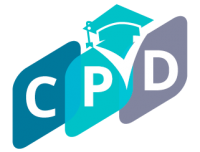Introduction:
Education is not just about passively receiving information; it’s a dynamic process that involves active engagement with the material. Active learning techniques go beyond traditional methods, encouraging students to participate, analyze, and apply knowledge actively. In this article, we will explore the significance of active learning and delve into various techniques that engage the brain for a deeper and more profound understanding of academic content.
1. **Interactive Group Discussions:**
One of the most effective ways to promote active learning is through interactive group discussions. This technique encourages students to articulate their thoughts, question concepts, and engage in meaningful conversations with their peers. Discussing topics in a group setting fosters collaborative learning, exposes students to diverse perspectives, and allows for the reinforcement of key concepts through verbal expression.
2. **Problem-Solving Activities:**
Problem-solving activities require students to apply their knowledge to real-world situations. Whether through case studies, simulations, or practical exercises, these activities challenge students to analyze information critically and develop solutions. The process of solving problems actively engages cognitive functions, promoting a deeper understanding of the subject matter.
3. **Role-Playing Exercises:**
Role-playing is an active learning technique that immerses students in simulated scenarios. Whether acting out historical events, scientific experiments, or business negotiations, role-playing provides a dynamic way for students to embody and understand concepts on a personal level. This technique enhances empathy, creativity, and critical thinking skills.
4. **Peer Teaching and Tutoring:**
Peer teaching involves students taking on the role of educators, explaining concepts to their peers. This not only reinforces their understanding of the material but also allows for collaborative learning within the student community. Peer tutoring is an effective way for students to break down complex topics, discuss uncertainties, and solidify their own knowledge through the act of teaching.
5. **Utilizing Technology for Interactive Learning:**
The integration of technology offers a wealth of opportunities for active learning. Interactive online platforms, educational apps, and virtual simulations engage students in a way that traditional methods may not. Virtual labs, quizzes, and interactive multimedia content not only capture attention but also provide immediate feedback, promoting active participation and self-assessment.
6. **Incorporating Hands-On Activities:**
Hands-on activities and experiments are powerful tools for active learning, particularly in subjects like science and engineering. Whether dissecting a specimen, conducting a chemistry experiment, or building a model, the hands-on experience reinforces theoretical concepts and connects them to real-world applications. This tactile approach enhances memory retention and comprehension.
7. **Mind Mapping and Concept Mapping:**
Visual tools like mind maps and concept maps are excellent for organizing information and promoting active engagement. Students can create visual representations of concepts, relationships, and hierarchies, facilitating a deeper understanding of the material. These visual aids stimulate creativity and provide a holistic view of complex subjects.
8. **Think-Pair-Share Technique:**
The think-pair-share technique is a structured activity that encourages individual reflection and subsequent collaboration. Students first think independently about a question or problem, then pair up with a peer to discuss their thoughts. Finally, pairs share their insights with the larger group. This process promotes active participation, reflection, and collaborative learning.
9. **Interactive Online Quizzes and Polls:**
Online quizzes and polls, integrated into virtual learning environments, are effective tools for active learning. They provide immediate feedback, gauge understanding, and encourage participation. Additionally, the gamification element inherent in quizzes can make the learning process more enjoyable and motivating.
Conclusion:
Active learning techniques represent a paradigm shift in education, moving away from passive reception to dynamic engagement. By incorporating methods such as group discussions, problem-solving activities, and hands-on experiments, educators can create a learning environment that stimulates critical thinking, creativity, and a deeper understanding of academic content. As students actively participate in their learning journey, they not only absorb information but also develop the skills necessary for lifelong learning and success in a rapidly evolving world.
